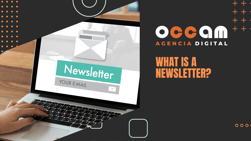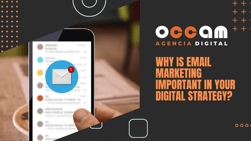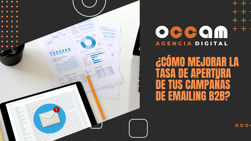Index Content
Email marketing or emailing is a tool to establish a communication channel between the customer and the company. It works by sending emails for various purposes: to alert about news, share promotions or present a new service, among others. For a proper digital marketing strategy, emails must be tailored to subscribers based on their tastes, needs and stage in the buyer's journey. However, the success of the mailing not only lies in the content of the message. Other factors such as the time of sending or the structure of the email also play a role.
In Inbound Marketing, the user is key to the brand. Establishing a relationship with leads and gaining their trust will guarantee an increase in conversions. To achieve this, email marketing focuses on fostering communication using automated processes. Among its many advantages are its low cost and time savings. Using the right CRM is essential to optimise campaigns and achieve the best results. HubSpot 's software brings together all the tools necessary to incorporate mailing into your business.
why is it important to send the right email?
A correct email marketing strategy focuses on providing value to the message for users. The goal is to choose the right message at the right time. This will determine the success of the campaign as these factors will determine the impact of the email on the subscriber. Defining the intention with which the email is sent and the value of the contact will serve to optimise the processes.
.jpg?width=400&height=200&name=XK%20ES%20IMPORTANTE_page-0001%20(1).jpg) In any Inbound Marketing strategy, success lies in attracting customers through relevant and useful content. This is achieved by adding value to each stage of the sales funnel. In this way, they will not lose interest during the process and your emails will stand out.
In any Inbound Marketing strategy, success lies in attracting customers through relevant and useful content. This is achieved by adding value to each stage of the sales funnel. In this way, they will not lose interest during the process and your emails will stand out.
what should the email be like at each stage of the buyer's journey?
During the buyer's journey, the user initiates a search process until the purchase of the product or service. It is crucial that the user feels valued by receiving the right email for each stage. Each content attracts different processes. These are some examples of the type of email that the subscriber should receive at each stage:
- Acknowledgement: In this first contact, it is convenient that the lead receives an email of presentation, welcome or an offer of the main products and services of the company.
- Consideration: The user begins to have interest in the brand so it is convenient to send an email detailing the services, communicating quality information or real customer testimonials.
- Decision: This is the final stage of the process, so that the user decides to make a purchase, it is recommended to send exclusive or personalised offers according to the last pages visited or purchases made.
3 keys to send the right email
1. The right content
To create the right email, it is essential to offer valuable and personalised content. A review of the previously segmented contact list should be done to know the stage of the buyer's journey, interests and needs of the user. If a contact performs an action related to a specific topic, you could automate the sending of a follow-up email that offers extra content on that topic.
Contactsegmentation works by dividing users into small groups based on their similarities. This point is vital to offer tailored, relevant and engaging communication. Similarly, having an up-to-date database will allow you to store information, record activities and gather your company's contacts in one place. HubSpot Marketing Hub offers tools to carry out these processes.
2. Right recipient
Sending the right email to the right person determines the success of the email marketing campaign. The key is to connect the user's stage in the buying journey with the sending. It can help to ask yourself the following questions about the recipient:
- will the information in the email be useful to them at this time?
- is the content of the email relevant to their buying objectives?
- what real value will this email have for the recipient?
.jpg?width=211&height=223&name=MUJER%20PENSANDO_page-0001%20(1).jpg) 3. Timing
3. Timing
Choosing the ideal time to send emails will ensure a greater impact on subscribers. To send a timely email there is a formula based on the sum of relevant content and ideal timing. Both factors must coincide for the strategy to meet its objectives. Personalisation of the sending time should be used. This action consists of using contact data to schedule emails that maximise interactions.
3 best practices when sending an email
1. Set expectations
The email should be clear and show the objectives it aims to achieve. That is, it should use simple language and vocabulary that conveys to the subscriber the brand's intentions, such as asking them to invite other members to register on the website, inviting them to try a product or welcoming them, among others.
2. Take care of the structure of the email
The design, images, content and format that will be used will be what will impact on the user. It is advisable to make an outline of the email before scheduling its sending. It is recommended to use the preview text to ensure its result.
To organise the structure of the email, it is recommended to use the AIDA model. It is based on attention, interest, desire and action and serves to adapt the content of your email. First, you must capture the attention of the contact using their data to know their personal interests. This is achieved with a good header or subject line. Then, you must try to keep the interest of the audience by generating relevance to the message. After this, you must connect the value of the product with a need or desire of the contact. Finally, this need must be fulfilled by making the purchase of the product. 3. Personalise delivery and content
3. Personalise delivery and content
Creating a personalised message for contacts will be a good practice for sending an effective email. To do this, the necessary information should be sent in the ideal context.





